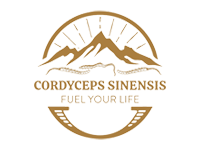- cordycepsfuel@gmail.com
- Dighi Kala West, Hajipur, Bihar-844101, India

The Science Behind the Healing Power of Himalayan Caterpillar Fungus
In the misty heights of the Himalayas, above 3,500 meters, a rare and potent natural treasure thrives — the Himalayan Caterpillar Fungus, locally known as Himalaya Keeda Jadi. Also referred to as Cordyceps Sinensis, this extraordinary fusion of fungus and insect has been revered for centuries in Tibetan medicine and ancient royal courts. From boosting vitality to enhancing immunity, this miraculous fungus has over 50 healing properties that modern science is only beginning to fully understand.
🌿 What Is Himalayan Caterpillar Fungus?

The Himalayan Caterpillar Fungus is a unique parasitic organism. It infects the larvae of ghost moths (Hepialus species) and gradually replaces the host tissue with its own fungal cells. What emerges is a grass-like stalk protruding from the mummified caterpillar’s body — a natural marvel found only in the high-altitude meadows of India, Nepal, Bhutan, and Tibet.
Locally called Himalaya Keeda Jadi (“worm herb”), it is considered a bio-adaptive tonic — helping the body adapt to stress and recover from fatigue. While once used in tribal rituals, it eventually found its way into the palaces of kings and emperors in China and India for its extraordinary power to restore strength, stamina, and sexual vitality.
👑 Royal Legacy: A Remedy for Kings

Historical texts and royal archives reveal that the Himalayan Caterpillar Fungus was once reserved for royalty, warriors, and the spiritual elite. Tibetan monks consumed it during long meditative retreats to maintain energy and focus. Chinese emperors reportedly used it as an aphrodisiac and life-extending elixir, while Indian maharajas were known to consume it to boost immunity and virility.
Due to its rarity and effectiveness, Keeda Jadi was valued as much as gold and sometimes even used as a form of currency in ancient Himalayan trade routes.
🧬 The Science Behind Its Healing Power
Recent scientific studies have started to validate what ancient healers knew all along. The bioactive compounds in Cordyceps include:
- Cordycepin – A powerful nucleoside with anti-inflammatory and anti-cancer properties.
- Adenosine – Supports cardiovascular health and energy metabolism.
- Polysaccharides – Boost immunity and improve gut health.
- Ergosterol – An antioxidant precursor to vitamin D.
- Sterols & Peptides – Support hormone regulation and muscle strength.
These compounds work synergistically to offer a broad spectrum of healing properties.
🩺 50+ Proven and Traditional Health Benefits

Here’s a look at just some of the 50+ healing effects associated with Himalayan Caterpillar Fungus:
🧠 Mind & Brain
- Enhances memory and cognition
- Reduces stress and anxiety
- Supports neuroplasticity
💪 Energy & Endurance
- Increases stamina and physical strength
- Boosts athletic performance
- Delays fatigue
🛡️ Immunity
- Strengthens immune system
- Acts as a natural antiviral and antibacterial
- Supports post-illness recovery
❤️ Heart & Circulation
- Improves blood flow and oxygen absorption
- Reduces bad cholesterol
- Supports cardiac function
🫁 Respiratory Health
- Beneficial for asthma, bronchitis, and COPD
- Enhances lung capacity
- Supports smokers in detoxification
🍆 Sexual Health
- Boosts libido and fertility
- Balances sex hormones
- Known as “natural Viagra” in traditional systems
🧬 Anti-Aging & Regeneration
- Slows cellular aging
- Enhances mitochondrial function
- Promotes tissue repair
💊 Other Benefits
- Controls blood sugar levels (diabetes support)
- Regulates liver and kidney function
- May reduce tumor growth (anti-cancer studies underway)
🌏 Why the World Is Turning to Himalaya Keeda Jadi

With increasing interest in natural wellness and holistic healing, the demand for Himalaya Keeda Jadi has skyrocketed. Wellness experts, biohackers, athletes, and even pharmaceutical researchers are now turning to this age-old remedy for its broad spectrum of benefits.
Its use has expanded from traditional herbal brews to capsules, tinctures, teas, and even energy bars. Still, the raw, wild-harvested version from the Himalayan slopes remains the gold standard due to its higher cordycepin content and authenticity.
⚠️ Beware of Imitations
The high price of Himalayan Caterpillar Fungus has unfortunately led to a surge in counterfeit products. Many lab-grown or artificially cultivated versions lack the potency of the wild variety. Consumers are advised to:
- Buy only from verified suppliers
- Look for lab test certificates
- Examine the fungus’s color, aroma, and structure
Authentic Himalaya Keeda Jadi is golden brown, intact (caterpillar body + fungal stalk), and carries a distinct earthy aroma.
🛒 How to Consume It Safely
Recommended daily dosage: 1–2 grams of dried fungus
Method: Steep in warm water or milk, or grind and mix with honey
Duration: 15–30 days for noticeable results
Precaution: Consult a physician if you have a chronic illness or are on medication
🌱 Final Thoughts
The Himalayan Caterpillar Fungus is more than just a rare herbal remedy — it’s a legacy of ancient wisdom, validated by modern science. With its powerful combination of bioactive compounds, it addresses multiple aspects of physical and mental health, making it one of nature’s most potent adaptogens.
As global interest in Himalaya Keeda Jadi grows, one thing is clear: what once fueled the strength of kings and monks is now transforming the way we approach wellness in the 21st century.
Featured News
CordycepsFuel: Redefining Wellness with Wild Himalayan Cordyceps Mushroom
The Science Behind Caterpillar Fungus: Bioactive Compounds Explained
August 11, 2025
The Science Behind the Healing Power of Himalayan Caterpillar Fungus
August 11, 2025
Category
Have Any Question?
Feel free to message us anytime! We are available 24/7 and always happy to assist you. Whether you have questions about cordyceps or need help with your order, we are just a message away. Your satisfaction is our priority!
- +916207920700
- cordycepsfuel@gmail.com
